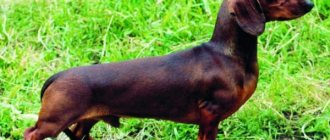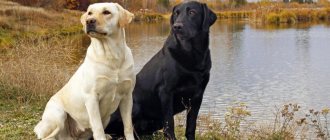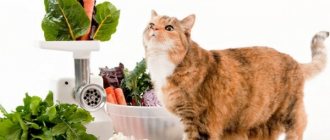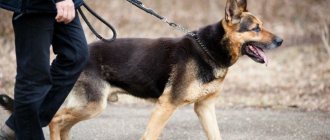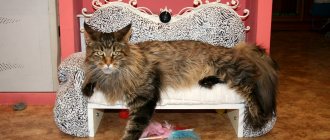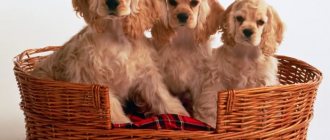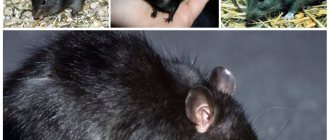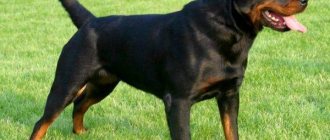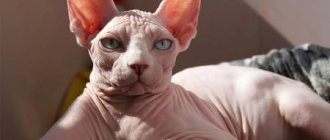Increasingly, guinea pigs are kept at home. However, many novice owners do not know that there are many nuances in caring for cavy. Take the fact that a rodent can die if it doesn't eat for at least one day. Therefore, it is better to find out in advance what it is, what it eats, what living conditions are necessary and how to properly care for such an animal.
Preparing for a Guinea Pig
Before you bring a new pet into your home, a home must be arranged for it. Even before purchasing a cage, you need to choose a place where the cage will stand. Pigs do not like excessive heat and drafts, so it is better to choose a place for your pet away from radiators and windows.
In addition to the cage, the pig needs: a drinking bowl, a feeder, bedding, a resting house, a comb for long-haired breeds, scissors or tweezers for caring for claws, food, hay for nutrition, toys and a carrier for visiting the veterinarian.
After the pig and the owner get used to the new life and new responsibilities, accessories for entertainment can be made or purchased additionally. Your pet will need new entertainment.
Aviary for walks
In the warm season, you can build an enclosure on your balcony or dacha for walks in the fresh air, where the animal can at the same time enjoy fresh grass. Basic requirements for the product:
- the enclosure is made of wooden slats and metal mesh;
- the pen is installed on legs, since pigs should not be allowed to be on a wet floor;
- minimum pen dimensions: height - 50 cm, length - 100 cm, width - 50 cm;
- the design should protect pets from other animals.
Choosing a home for a guinea pig
The choice of housing for a guinea pig comes down to 4 options: cage, terrarium, container and enclosure. All of these types of houses are acceptable for keeping a rodent. But each type of house has its own characteristics.
Cell
Breeders of these cute rodents believe that this is the best option. In a cage, the pet is protected, it cannot get out on its own and go wandering around the apartment, and there is also good air circulation in it. There is only one drawback in such a house - food and bedding scatter around the cage, and the garbage has to be removed daily.
To make the animal comfortable, the cage must be:
- Spacious. A cage of at least 90 cm in length, 40 cm in height and 60 cm in width is suitable for one pet. For two individuals kept together, the cage length must be at least 120 cm and width 80 cm.
- With plastic tray. If the cage does not have a tray and there are only metal bars on the floor, then the animal’s paws may get stuck. This will lead to injury.
- Not tall. Multi-tier cages are not intended for pigs. Pigs do not know how to jump and deftly climb to the upper floors. Therefore, trying to climb higher can lead to injury. But even if the animal climbs up, problems may arise with the descent.
Terrarium
Connoisseurs do not welcome it when a pig is kept in a terrarium. Its blank walls interfere with ventilation. And this leads to the fact that the terrarium will be hot and stuffy. The bedding in this type of pig house does not dry out. To create air circulation, the side walls of the terrarium are made of mesh.
But this is a “cleaner” type of housing, since sawdust and hay do not fly in different directions from the terrarium, and there is less cleaning.
Aviary
An aviary is the best type of housing for a pig if there are no cats or dogs in the house. The size of the enclosure can be much larger than that of a cage or terrarium, which provides the rodent with more space. The walls of the enclosure are made at least 40 cm high so that the pet cannot climb over it. An aviary is also an economical option.
Plastic container
This type of housing is also called “Dune”. Breeders do not recommend keeping animals there. The container is designed with a plastic tray and a plastic lid with holes. Despite the holes, the flow of fresh air is not enough for the pig to feel comfortable in it. And the dimensions of the container are not large enough for the pig to have room to roam. “Dune” is convenient to use as a carry bag in warm weather.
The history of the appearance of the rodent breed
Representatives of South American tribes began breeding wild guinea pigs. These individuals were not like modern individuals with fluffy fur. After the discovery of America by Columbus, representatives of these rodents began to be brought to Europe.
Peru is considered the birthplace of sea pets. In ancient times, they were found in almost every home, but they were eaten and not kept as pets. Wild representatives of the breed had a dark color - black or brown.
They ran in flocks across the fields, hiding in dense bushes when danger arose. Rodents were bred for food.
Domesticated small rodents were called marine not because of their great love for sea fun and water procedures, but simply because they were brought from sea voyages. Cute and funny individuals were brought mainly from America and, due to the fact that they make a squeak, similar to a grunt, they were called pigs. They are capable of making different sounds, especially if they are very frightened.
Arrangement of a guinea pig's home: list of necessary and additional accessories
The abundance of products in pet stores can confuse newbies. Does a pig really need that many gadgets? There is a necessary list of purchases for a pet, and there are items that are purchased at will.
Necessary household items for guinea pigs are:
- Drinking bowl.
It is best to use a hanging option, as bowls standing on the floor turn over and water spills. Sawdust and animal excrement can also get into the bowl.
- Feeder.
The hanging option is again preferable to the floor one for the same reasons.
- Sennik.
This is a special container for hay. It is generally accepted that hay can simply be thrown onto the floor in the cage. But, given that the pet eats some parts of dry grass, it is better not to put it on the floor for hygiene reasons.
- House.
It may seem that your pet does not need a closed, cozy place. But, without the opportunity to shelter and rest, the animal may begin to behave nervously and aggressively. Therefore, a quiet, calm place, closed from prying eyes, is one of the essentials.
Additional accessories for entertaining and caring for your pet include: wooden toys, a hammock, a salt stone, a bed and other items presented in a wide range of stores. They will occupy the pet's free time when the owner is busy. But they do not have to be present in every guinea pig's cage.
A unique language of sounds
With the help of certain sounds, small rodents express their mood and emotions:
- a persistent squeak indicates severe hunger.
- Males roar in front of each other to show their importance. This is a sign that the male or females are very angry and irritated. They may also chatter and grind their teeth.
- Prolonged cackling and cooing are evidence of the pet’s good-natured state of mind.
- When paired, pigs often grunt. This is them greeting each other and exploring.
- Males coo to females when they are trying to mate.
- Quiet or loud squeals and whistles are a sign of pleasure.
Guinea pigs may moan or squeak loudly. This indicates that the pet is in pain. If your pet is sick, he will be lethargic and drowsy. Loses active appetite. His eyes may become sour and watery. In these cases, it is better to take the rodent to the veterinary clinic for treatment.
What and how to feed your guinea pig
The rodent menu includes fresh and dried herbs, fresh vegetables and fruits, and cereals. Unlike rats and hamsters, guinea pigs eat mostly grass and vegetables rather than grains. Grain should be in the diet of the main characters of this article, but in smaller quantities than their relatives.
List of products for the daily diet of pigs:
- Hay.
- Fresh plants: nettle, dandelion, chamomile, alfalfa, dill, burdock and lettuce.
- Fresh vegetables: carrots, cabbage, beets, cucumber, celery, pumpkin, zucchini.
- Fresh branches of fruit trees and shrubs: apple, raspberry, blueberry, pear. Willow, maple, and ash branches are also suitable.
- Fresh berries and fruits: apple, pear, banana, strawberry, cherry.
Stores sell special dry food for pigs. There is no consensus on whether it is necessary in the daily diet of an animal. Some breeders give their pets one tablespoon of food daily for each individual, considering this a necessity. Other owners limit themselves only to fresh food. But it is absolutely clear that you cannot feed animals with dry food alone. Fresh herbs and vegetables are required in the diet.
It is recommended to add treats to the usual menu two or three times a week. Pigs will love dried fruits and nuts. But they should not be the basis of the diet.
It is strictly forbidden to feed these rodents the following products:
- pasta, bread and other flour products;
- dairy and fermented milk products;
- sausage and meat, as well as fish and eggs;
- potato;
- sugar-containing products;
- mushrooms;
- onion and garlic;
- legumes (peas, beans, etc.), except peanuts.
You need to feed your pig 2-3 times daily. High-quality hay should always be available to the animal.
Your pet's diet should be varied. You cannot feed your rodent the same food every day.
The pig is given treats no more than 2-3 times a week, otherwise it may negatively affect the pet’s health.
You cannot leave an animal without food for a long time. If the pet does not eat for 18 hours, then irreversible changes will begin in its digestive system, which can lead to the death of the animal.
Pigs drink little water, but there should always be a supply of fresh boiled water in the cage.
In winter, instead of fresh herbs, the pig is fed sprouted grains.
The daily portion of food should not be more than 30% of his body weight. If you overfeed your pet, it will develop obesity.
The introduction of new products should be gradual. First, treat your pet with a small piece of a new type of food. Then you need to observe the condition of the animal to see if there are any changes. And if everything is fine with the pet, then you can introduce a new product into the regular diet.
Pigs are sensitive to the quality of food consumed. It is better to remove stale vegetables and rotten hay. Eating stale food will lead to digestive problems in the animal.
Where to put a cage with a rodent
This should be a bright place, but without direct sunlight in the warm season and not near a radiator in winter. You cannot place it at the entrance from the street or near ventilated windows. Pigs are sensitive to hypothermia and drafts. In order for an animal not to go wild, it needs to see people. This is due to their social nature. If the room is noisy, they put a house in the cage so that the animal, which is timid by nature, can hide.
How to properly handle a guinea pig
Guinea pigs have a sensitive perception of sound. Even a quiet but sharp sound can frighten an animal. Therefore, it is not recommended to place a cage with an animal in a room with a TV. You should also not shout at the animal.
Physical contact with your pet should be gentle. These animals have a fragile physique. Taking an animal by the scruff of the neck or by the paws can injure it.
You cannot throw objects into the pig’s house or shake the cage. This will cause stress to the animal. A nervous condition in pigs can lead to health problems.
Violent actions towards pigs are fraught with stress. If your pet does not want to leave the cage, then you should not force him out. This is done only if a trip to the vet is necessary.
A calm, quiet home atmosphere is suitable for this rodent. Only in peace and quiet will the animal feel comfortable.
You need to take care of your pet so that it is healthy, in a good mood, and its coat is shiny and silky.
Pet health
Let's talk about the main thing straight away.
At the first signs of illness, contact your veterinarian!
It is better if it is a specialist in rodents - a ratologist. Failure to provide timely assistance to your guinea pig can result in unpredictable consequences.
The most common symptoms of an unhealthy pet are:
- Lethargic behavior, lack of physical activity
- Reluctance to eat or drink
- Tousled and wet fur for no reason
- Discharge from ears, eyes, nose.
A timely diagnosis and assistance provided greatly increase the likelihood of a favorable outcome.
In general, with proper care and maintenance, the likelihood of health problems occurring is quite low.
Pay attention to any changes in your pet's mood.
Guinea pig hygiene
Basically, your pet does not require special care and can take care of itself, but there are situations in which the guinea pig cannot do without your help.
- Brushing breeds with long hair. If the fur is not taken care of, it will begin to tangle. Short-haired breeds do not need to be combed, but any pet likes this kind of “massage” and you can sometimes give it pleasure.
- Bathing. Cavies are afraid of water and do not like to wash themselves, but sometimes they have to (if their fur is heavily soiled, which the rodent cannot remove on its own). Wash in warm water with baby shampoo and be careful not to get water on the head (especially the eyes and ears).
- Ear cleaning. Earwax in the ear is something that your pet cannot deal with on its own; constant care and monitoring of the ears is required. Gently clean your ears periodically with a cotton swab or napkin, otherwise this can lead to diseases and even deafness.
- Trimming claws. Trim or file very carefully to avoid hitting blood vessels. You can see where they are by holding the claws up to the light.
Games, training and taming a pet
When a pet first appears in the house, you should not immediately grab it and actively get to know it. This is a new place for the animal, so it needs to be given time to get used to it. As soon as the animal is brought into the house, it must immediately be put in a cage. The cage must have food, water and a house. The owner needs to approach the cage and talk gently to the pet, without making loud or harsh sounds. The next day, you can offer your pet a treat from your hand. If the animal comes up and treats itself, you can gently stroke it. At this time, the animal gets used to the voice and smell of the owner and learns to trust him. After the pet has approached its owner several times, it can be picked up.
When holding your pet for the first time, you need to be calm, confident and careful. If the first time you try to pick up a pet is unsuccessful, the animal falls or hits itself, then it will continue to have a fear of hands.
After the pet gets used to the new place and begins to actively communicate with the owner, you can teach him a few tricks. In order for the pet to respond to its name, every time the owner pours food or offers a treat, you need to call the pet by name. The animal will associate the vocal signal with the supply of food and will begin to approach when simply called.
It is a mistake to believe that guinea pigs are inactive and mostly sleep and eat. They enjoy playing, exploring outside the cage and walking on the green lawn. Pig games are the simplest, but most interesting. The simplest entertaining game is playing with a paper ball. The animal will like the rustling ball and will happily roll it around. Another simple but fun activity is a cardboard box. You need to make holes in a small box and put it in a cage or enclosure for the pig. The pet will happily climb in and out of the box until it gets tired. To entertain the animal, you can also hang a hammock, build a tunnel, or let it chew on a branch of a fruit tree.
Activities for cute rodents include walking around the apartment or walking outside. To do this, you need to make sure that the space is safe and warn everyone that the small animal is “on the loose.” And when walking on the street, you will have to constantly monitor the animal so that it does not fall into the paws of a cat or dog.
Drinking regime and nutrition
It is more convenient to feed a guinea pig with ready-made concentrated food, at the rate of 20 g per kilogram of animal weight. If you give crackers, white bread or crispbread as a treat, you should know that such food is part of the finished food. Therefore, it must be given in accordance with the permissible volume.
It is worth adding 50 grams of succulent feed and fresh hay to the finished concentrated mixture. This type of feeding allows you to maintain the pig’s health at a high level, since all food has a balanced composition and is rich in vitamins and minerals.
Water is of great importance for rodents. Therefore, it is worth washing the sippy cup every day and pouring fresh, clean water. As vitamins, you can add ascorbic acid to the sippy cup at the rate of 30 ml per 100 ml of liquid. Vitamin C solution can be obtained from a veterinary clinic or pharmacy.
Tips for caring for guinea pigs
For a pet to have a comfortable life, the owner will have to devote a little time every day. Caring for a guinea pig includes: cleaning the cage and accessories, hygiene procedures for the pet itself and a preventive veterinary examination.
Cleaning your pet's home includes daily, weekly and monthly procedures.
Every day the animal’s water should be changed, the feeder should be cleaned, and uneaten pieces of food that may begin to spoil should be removed.
The cage itself is washed 2-3 times a week. Cleaning the cage includes changing the filler, washing the tray, wet cleaning the cage bars and all accessories inside the cage. The rodent's wooden house is wiped with a damp cloth. After cleaning, all items need to be dried, and only then add fresh litter and put the pig in the cage.
General cleaning, carried out once a month, includes all the same procedures as weekly cleaning. But it is also added to the treatment of the cage and interior items of the house with a solution of soda or vinegar. Toxic chemical disinfectants should not be used to clean guinea pig cages.
The pig must be examined for wounds, neoplasms, monitor its mood, activity, and type of excrement. This will allow you to determine in time that your pet is sick.
Bathing
As the pig's coat becomes dirty, it is necessary to bathe it. To do this, use a basin or wash your pet directly in the sink. The water level in the basin should not exceed 3 cm. Wash the pig carefully, without sudden movements. For washing, it is better to use a special shampoo for rodents, which is thoroughly washed off at the end of the procedure. You can dry the animal with a hairdryer, but only at the lowest temperature. After swimming, drafts should be avoided.
Some pigs love to swim
Guinea pig hygiene
Pigs in the wild are capable of keeping their bodies and their homes clean. But at home, to maintain cleanliness, they need the help of the owner.
Pigs need hygiene procedures almost the same as people. By following the rules of care, the animal will be clean, tidy and feel good.
Water treatments
Bathing is not the most pleasant procedure for these animals. And you should not often resort to water procedures. But if the pet got very dirty during a walk, or the animal had diarrhea, then it is necessary to bathe the animal. He cannot cope with this problem on his own.
For bathing, use baby shampoo. The water temperature should be less than 38 degrees. It is not necessary to bathe the whole animal if only one of its paws is dirty. You can't get the pig's head wet. Immediately after bathing, the wet animal is wrapped in a thick towel.
Combing and massage
Long-haired breeds such as angora, sheltie, alpaca, and coronet require brushing. The length of their hair reaches 20 cm. They will not be able to cope with their hair on their own. Comb this coat with a brush or a special comb several times a week. Before starting the procedure, it is recommended to wet the fur to make it easier to comb. This procedure will prevent the formation of tangles and make the fur silky. And if a tangle does form, it must be removed with scissors.
Smooth-haired and hairless guinea pigs can handle their own hairstyles, however, it is advisable to scratch them too. This should be done during the molting period and just for massage. Bald breeds include Skinny and Baldwin.
Some breeds have areas on their body where the hair grows in a circle. Such circular patterns are called rosettes. Rosette guinea pigs look cute, as if disheveled, and are prized by breeders.
Nail trimming
In nature, pigs grind their claws down on stones on their own. But this material is not common in cages and apartments. You can put a few rocks in your pet's cage or even put up a small, stable rock slide, but this still won't eliminate the need to give your pet a manicure. If the claws are not trimmed, they grow huge and begin to curl. It becomes uncomfortable for the pet to walk, its fragile skeleton becomes deformed, and dirt accumulates in the overgrown claws and bacteria develop. And this is not the whole list of problems that arise if you do not deal with the animal’s claws.
Nails are cut with a special nail clipper, which is sold in pet stores. You can also use tweezers and nail scissors. When cutting, you need to be careful, as there is a nerve and a vessel in the animal's nail. And it is important to correctly determine its location. In transparent nails this issue does not cause difficulties; the vessel and nerve are clearly visible. But with dark nails you will have to work slowly, gradually trimming the nails to the required level.
Pets' nails are cut every 2 weeks or once a month. If you skip procedures and let your nails grow, then the nerve in the claw will also grow back. This means that cutting your nails short will become more and more difficult each time.
Grinding down teeth
Nature provides that the front teeth of pigs should be ground down. Solid dry food, grains, and tree branches are suitable for this. If the teeth are not going to shrink, then this will interfere with the pet’s ability to eat. In this case, only a veterinarian will help. You need to contact him about this problem once every three months.
Eye check
You should check your eyes regularly for swelling, redness, or discharge. These symptoms may simply be caused by dirt or the result of a serious illness. If this situation happens for the first time, then you need to wipe your eye with a napkin. After this, the animal needs to be observed. Monitor the condition of the eyes and, in general, his mood and health. If the situation with the eyes has not changed for a long time or has worsened, then it is time to visit the veterinarian.
Ear hygiene
Dirty ears in guinea pigs can cause deafness. Therefore, animals’ ears need to be cleaned regularly. The ears are a favorite place for ear mites.
The ear cleaning procedure should be carried out using a paper handkerchief. You cannot use cotton swabs for this.
In addition to cleaning, it is worth noting if your pet is scratching its ears or tilting its head to the side, as if something is bothering it. Then this is a reason to visit the veterinarian.
You need to take care of your guinea pig regularly, but once all the rituals become a habit, care will be quick and easy.
Water treatments
The rodent does not like to bathe, so you only need to wash it if the animal gets dirty. You can’t wet your pig’s head; when you can’t do without shampoo, you should use either baby shampoo or a special shampoo for kevi, which needs to be completely rinsed off. The optimal temperature for swimming is 38 degrees. A lower temperature can cause hypothermia and the animal will get sick. Water that is too hot can burn the animal.
The anal sac should be washed especially thoroughly. To do this, lightly press on the pet’s stomach and remove the feces using a cotton swab.
In males, the foreskin is washed, as a large amount of dirt can accumulate here.
After the rodent is removed from the water, it must be dried with a towel. If the pet is a long-haired breed, then you can use a hairdryer, of course, when the animal is not frightened by its noise.
What makes a guinea pig sick?
Guinea pig diseases can be caused by infections, genetic predisposition, or improper care and maintenance of the animal.
Incurable diseases for which the animal must be euthanized:
- Plague.
The disease is dangerous for other animals. Its symptoms are weakness, apathy, lack of coordination and paralysis.
- Lymphocytic choriomeningitis.
The disease is dangerous not only for other animals, but also for humans. With symptoms such as difficulty breathing, fever above 39.5 degrees, pleurisy, convulsions, the animal must be urgently taken to the veterinarian.
- Pasteurellosis.
An incurable disease that is dangerous to other animals. Its symptoms: purulent nasal discharge, ulcers, wheezing when breathing, convulsions.
- Pseudotuberculosis entails paralysis of the limbs. Therefore, if diarrhea, refusal of food or exhaustion occurs, the animal should be urgently taken to a doctor.
- Parafit. Its symptoms: diarrhea, refusal to eat, apathy.
In addition, pigs suffer from colds, rickets, conjunctivitis, infection with parasites (both internal and external), hair loss (alopecia), malocclusion, diseases of the digestive tract, and fractures.
The following symptoms are reasons to be wary and closely monitor the animal, or even take it to the veterinarian:
- lethargy;
- depression;
- unkempt fur;
- discharge;
- problems with going to the toilet and dirt near the anus.
The tips for caring for a guinea pig described in this article and preventive visits to the veterinarian will help avoid some diseases that can become chronic and harm the animal if left unattended.
Reproduction
Preparing for pregnancy
Despite the fact that the animals reach sexual maturity early, experts recommend breeding them at the age of at least 10 months. When choosing a pair, give preference to individuals of the same breed and age category. Future parents should not be related. Obese individuals should also be excluded. A week before the expected mating, increase the amount of vitamin E in the animals’ diet.
It is advisable to plan a future pregnancy so that fertilization takes place no later than November, then the female will have time to feed her offspring before the spring molt. Otherwise, the combination of lactation and molting can be disastrous for the female, weakened after pregnancy. For the same reason, it is not recommended to cover females more than three times, and rare breeds that are difficult to care for and breed, twice a year.
Estrus in guinea pigs lasts 2 days and repeats every 12 to 20 days. The most favorable period for fertilization is the first 12 hours. It is not difficult to notice the pig’s readiness to become a mother; she takes a characteristic pose: she raises her back, spreading her legs and standing motionless. Males are almost always ready to mate.
The fertilized guinea pig is placed in a separate cage. If the next heat does not occur, then this indicates pregnancy, which will last about 10 weeks. Multiple pregnancies may result in earlier births.
Toxicosis in guinea pigs
So-called toxicosis can become a big problem during pregnancy. This is a painful condition that is typical for many individuals in the last weeks of pregnancy or the first days after childbirth. Often this condition leads to the death of the animal. Manifestations of toxicosis:
- Muscle cramps.
- Loss of appetite or complete refusal to eat.
- Profuse drooling.
- Tousled, dull fur.
The causes of toxicosis are poor nutrition, lack of water or vitamins, stress or multiple pregnancy. It is necessary to isolate the pregnant female from all these factors and provide her with special care.
Caring for a pregnant female
- Calm walks 1 – 2 times a day.
- Stable temperature and humidity in the room.
- Keep in a cage with an area of at least 1200 – 1500 cm2.
- No stress - it is not recommended to handle the pig (it can cause miscarriage), pet it, or clean the cage often or for a long time.
- A varied diet - in the first half of pregnancy, the feed rate is increased by 1/3, in the second half - by 2 times.
- In addition to drinking water, they offer rosehip infusion, milk and tomato juice.
- Mineral and vitamin supplements in food (according to the recommendation and dosage of a veterinarian).
- Installation of a house in a cage with a nest made of fresh hay.
- For hygiene purposes, long-haired females need to be trimmed a few days before giving birth.
Childbirth and baby care
Childbirth is usually quick and uneventful, lasting no more than 30 minutes. Newborns are born sighted, hearing and with developed incisors. Weight ranges from 50 to 140 g. A litter contains on average 3 – 5 individuals. The cubs grow quickly, and on the 2nd - 3rd day they begin to eat food familiar to adults. By one month they become full-fledged guinea pigs, which can be separated from their mother.
It may happen that the mother dies during childbirth or after it from toxicosis. Then the best option would be to place the offspring with another female, since it is better for the babies to be among relatives. It is usually possible to feed orphans with diluted dry cream from a pipette. Be sure to provide the little ones with access to eat the droppings of adult pets. If by the 17th – 20th day of life the weight of the cubs has doubled, then we can assume that they are saved and are developing normally.
Unfortunately, non-viable babies born weighing up to 40 grams must be disposed of immediately. It is almost impossible to get out of them and, even if possible, the individuals will be too weak and sickly to live a full life.
Trimming claws.
It is necessary to ensure that the claws are not too long and sharp. The presence of long claws prevents the pig from moving. Claws should be trimmed only in cases of extreme necessity and very carefully. In this case, special sharp scissors or forceps should be used.
During the procedure, be sure to ensure that the skin is not damaged. If the claws are not very long, then you can remove the excess using an ordinary nail file. All these operations do not have to be done by the owners of the animals themselves. It is quite possible to entrust this to specialists.
Tags
Guinea pig
Care during illness
The first thing to do at the first signs of illness is to take your pet to the veterinarian. Next, you should follow your doctor's recommendations.
- Liquid medications can be given using a syringe without a needle.
- It is better to offer tablets using a hemostatic clamp. The device can be purchased at a pharmacy.
- It is more convenient to administer subcutaneous solutions using a butterfly crater.
Eye drops are instilled as follows:
- The animal is placed on the table with its back to the owner.
- Drops drift over the animal's head.
- With your free hand, move your eyelids apart;
- Drops are buried on top.
To monitor your guinea pig's urine and stool, place it on a towel while it is sick.
If your pet experiences chills, it should be wrapped in a warm cloth. Additionally, you can wrap a heating pad in a towel and place it in the corner of the cage.
If rodents lose their appetite, guinea pigs are fed by hand. Pets are regularly weighed to prevent exhaustion.

